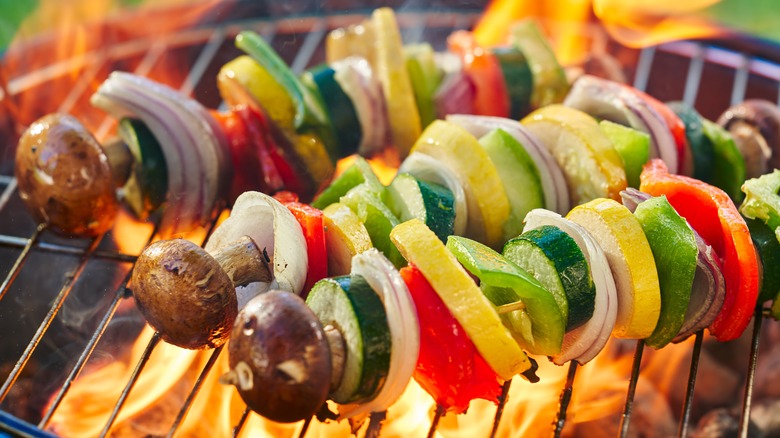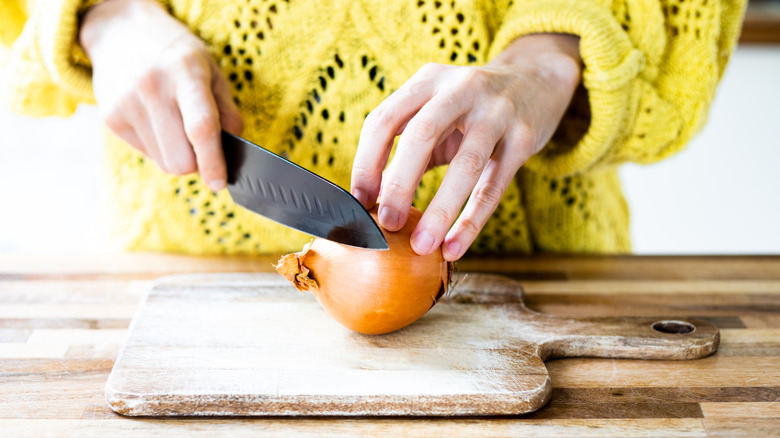Here's The Correct Way To Cut Onions For Aesthetically Pleasing Kabobs
We may receive a commission on purchases made from links.
Whether you're serving kebobs to a crowd or grilling a small batch for yourself, they need to look inviting. An easy way to lend your skewered meats heaps of visual appeal is to thread chunks of colorful vegetables like zucchini or squash, different varieties of peppers, and, of course, red onions onto them. What, though, is the key to making the most aesthetically pleasing kebobs? Cutting your onions the correct way into quadrilateral chunks, instead of flimsy slices, ensures they look pretty against your marinated protein and have enough heft to withstand the heat from the grill.
To begin, slice your peeled onion through the center, from root to tip. Then take each half, lay it flat on your cutting board, and slice off the top before cutting through the root again so the base of your onion remains intact (keeping the hairy root on the end, ensures the layers of the onion stay flush against each other, making it easier to slice). Turn each piece of onion so it's lying lengthways across your board and cut it down the middle into two portions that are roughly the same size.
Finally, separate the onion into individual layers that look like curved rhomboids with a substantive perimeter (simply cut off the root so you can pull off each piece). Their bigger shape means they'll easily withstand being pierced through a skewer without tearing and look attractive when arranged in a uniform pattern along with your protein, veggies, or even tofu if you're making plant-based kebobs.
Onions imbue kebobs with a charred sweetness and aroma
Threading chunks of onion on your kebob skewers serves several functions. Firstly, it lends meat-based kebobs some much-needed color and vibrancy against the muted color of the protein, whether it be chicken, lamb, or seafood. Secondly, the onions develop a scrumptious char on their exterior and caramelize in the heat of the grill, imbuing your kebobs with a gentle touch of sweetness.
While onions give off the most inviting aroma as they cook, they also protect the sides of the meat that they're pushed up against from drying out, which guarantees they retain their succulence. And finally, the onions help to keep the chunks of protein in place so they don't slide off your shish kebab skewers as you rotate them, essentially acting as edible bookends.
Yellow onions like Vidalias are also ideal for kebobs because they have an inherent mild flavor that lacks the harsh pungency of other supermarket varieties. Plus they have enough structural integrity to hold their shape. Having said that, red onions are equally — if not more — sweet and their arresting color makes for kebobs that look pleasing to the eye, especially when combined with red and yellow bell peppers. Check out this guide to cooking with every type of onion if you need help selecting the best ones for your dish.

